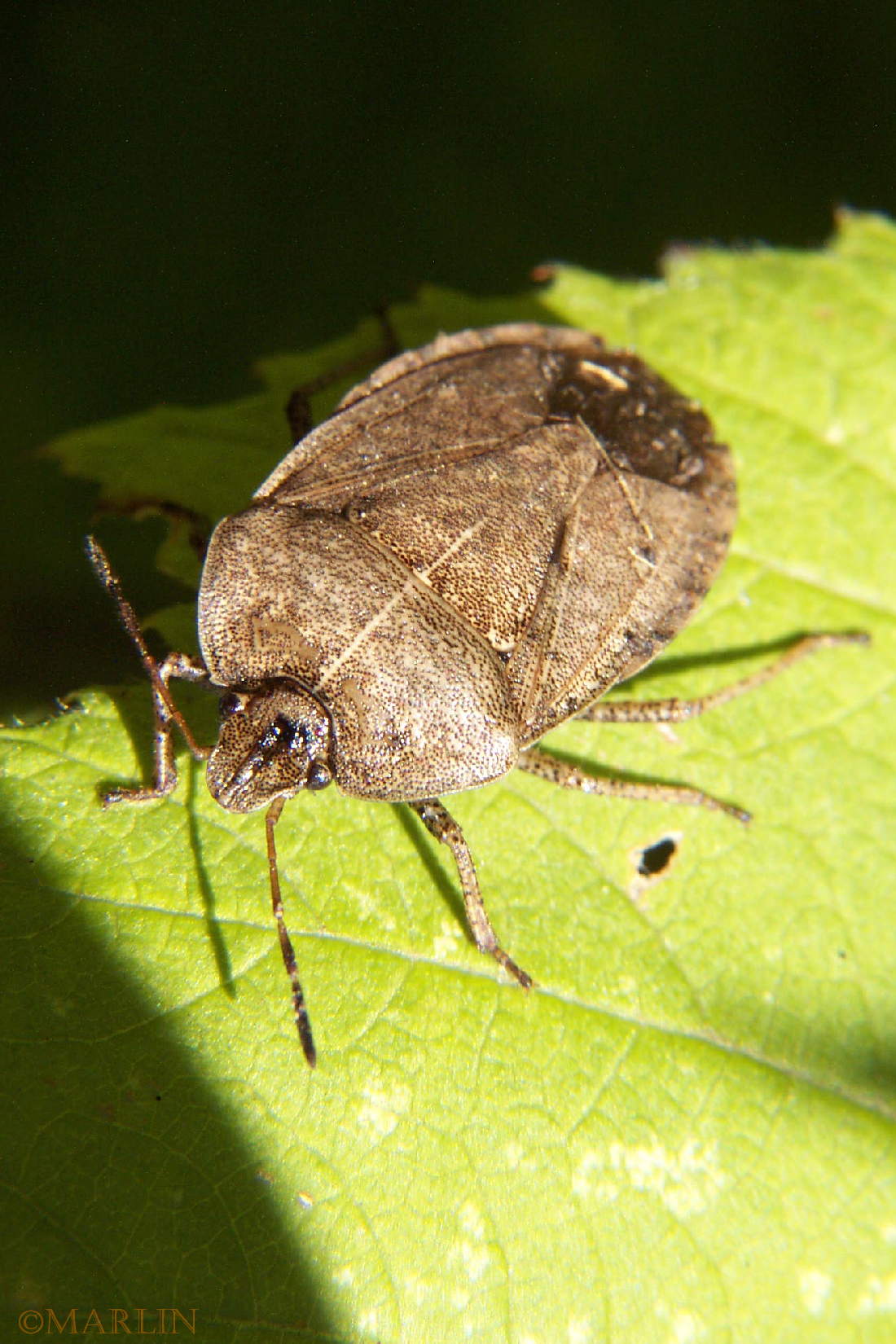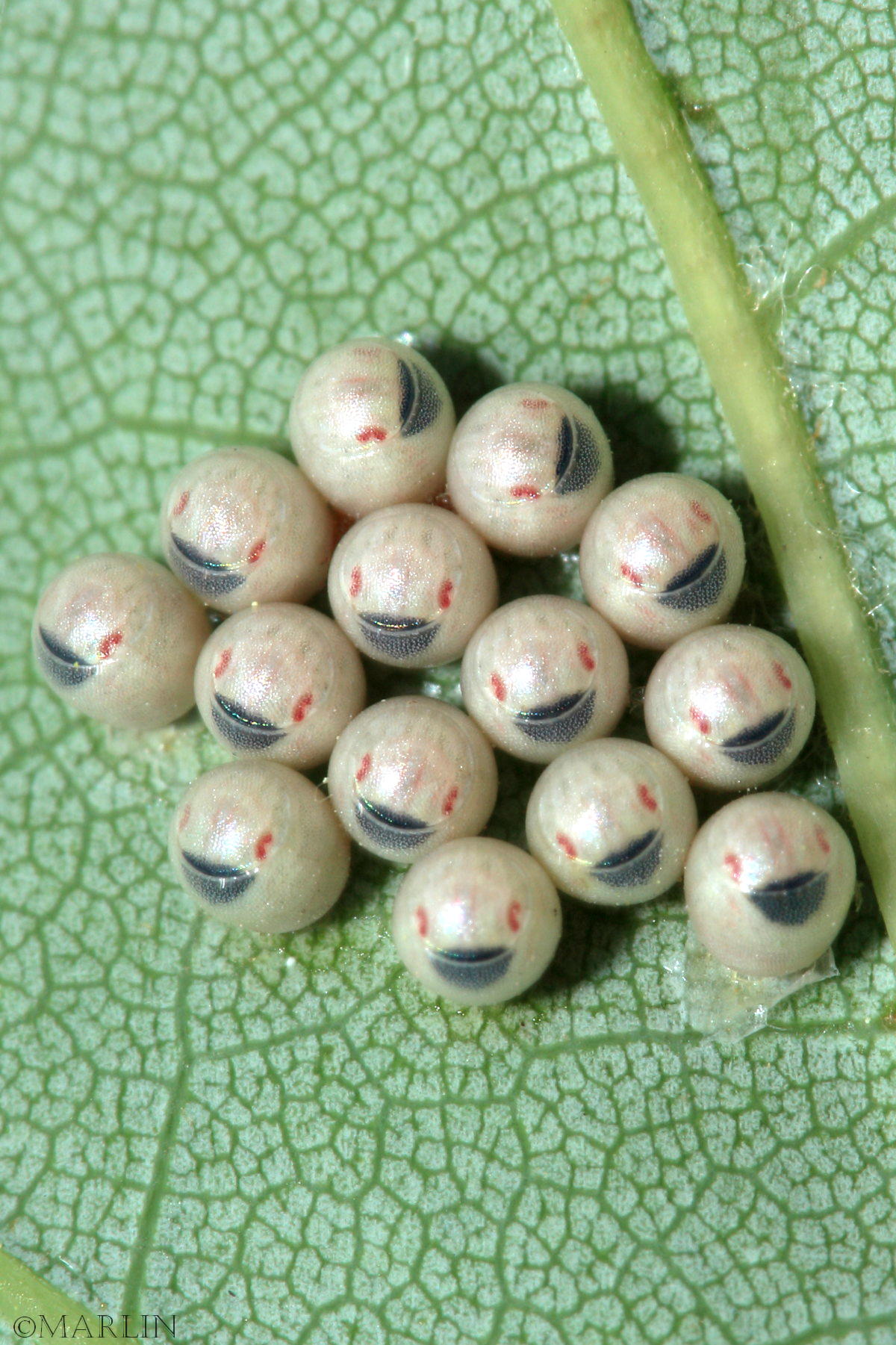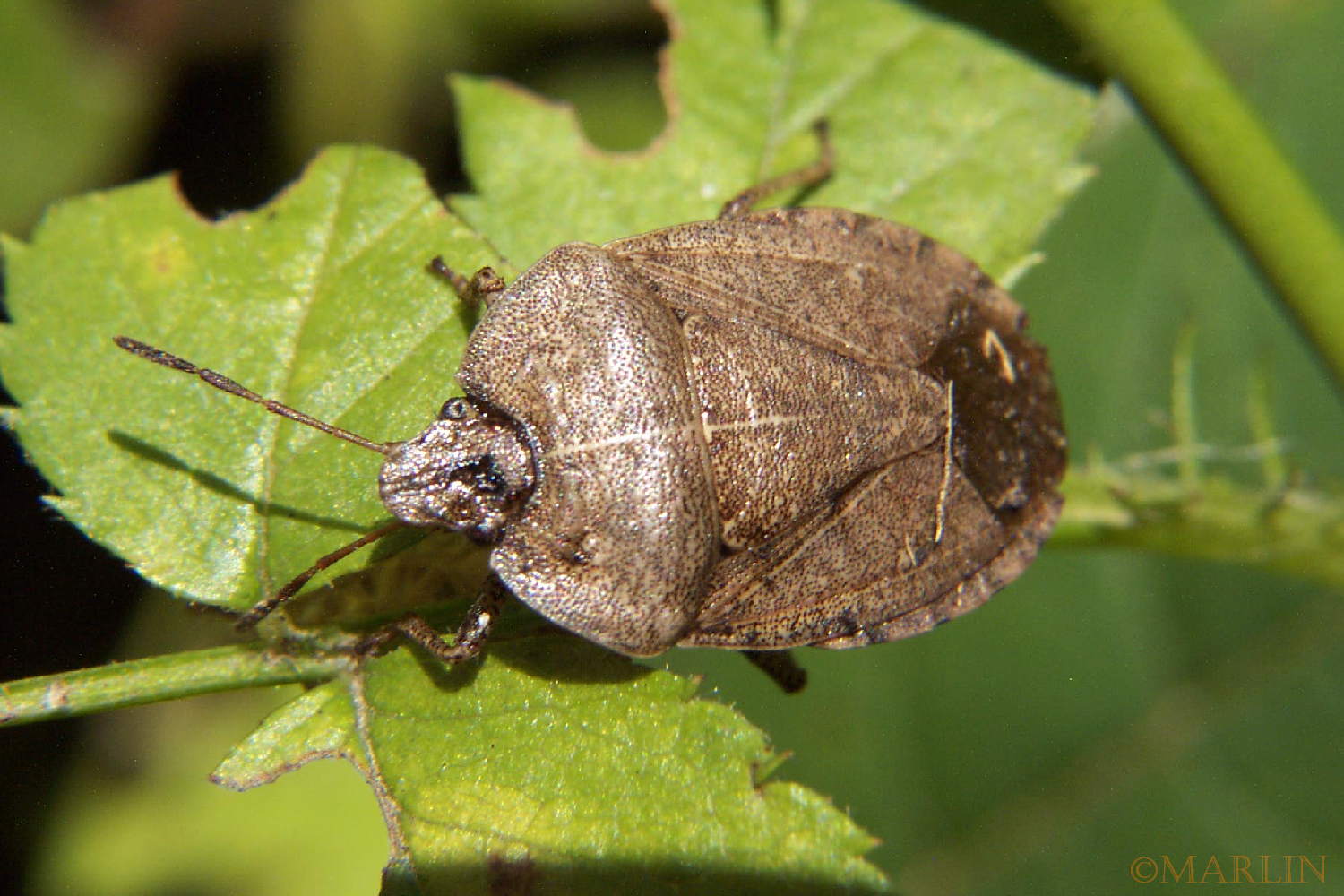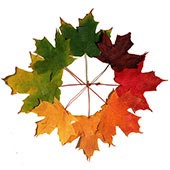Stink Bug – Menecles insertus
Stink Bug body (viewed from above) divided into 5 sections: pronotum, scutellum, two basal leathery portions of hemelytra [one on each side of the scutellum], and two apical membranous portions of hemelytra that completely overlap and act like a single section [1].
Stink bug eggs on underside of maple tree leaf. Each egg is just 1mm in diameter (about .04 inch).
Stink bugs characteristically deposit their eggs on the underside of leaves in clusters with tight rows of individual barrel-shaped eggs. After overwintering, adult females seek out suitable hosts in early spring and deposit their eggs on host plants. 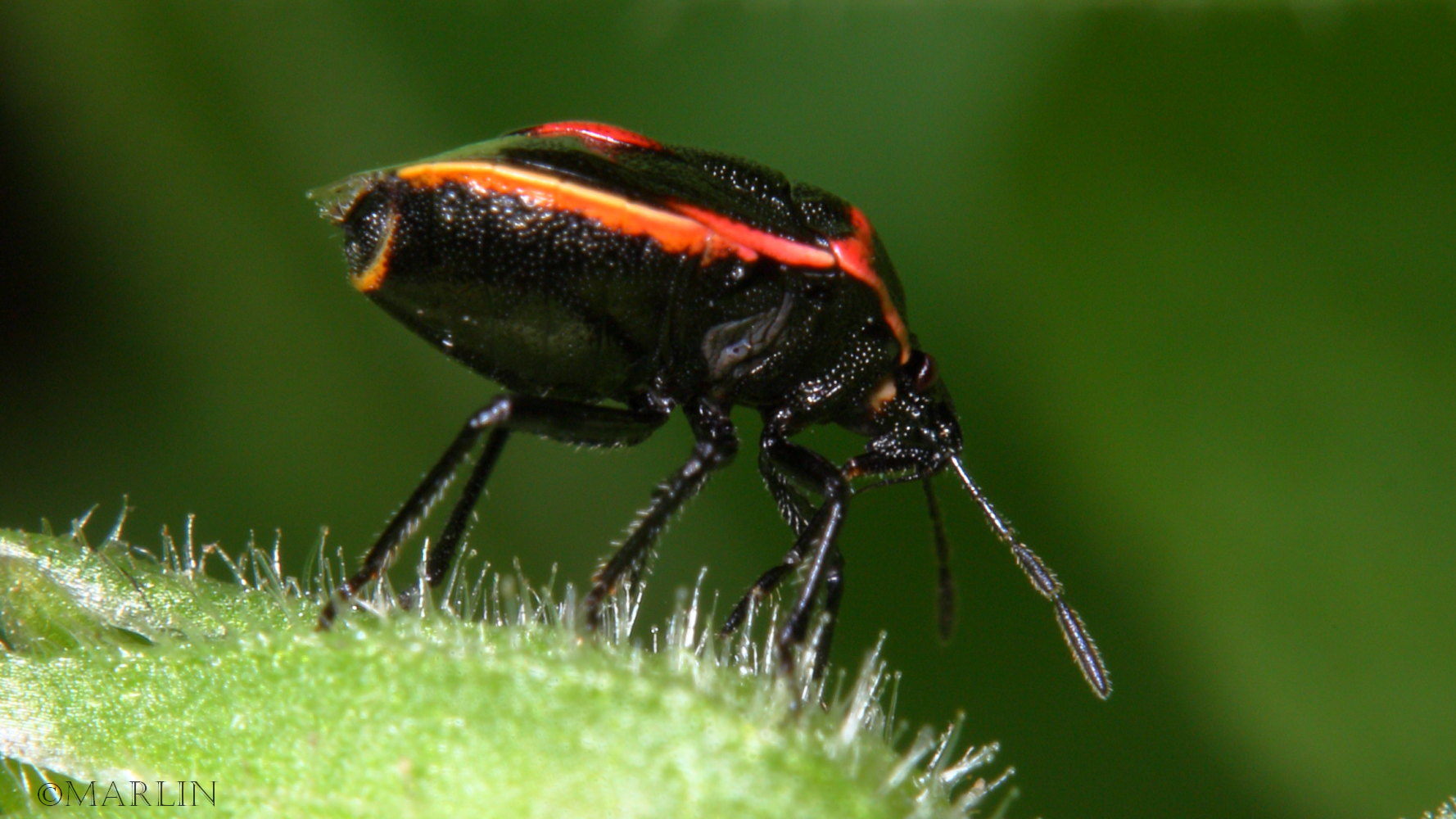
This Cosmopepla stink bug has its rostrum inserted into a seed pod and is sucking nutrients out of the plant like a milkshake through a straw.
Stink bugs feed on developing seed of many hosts including trees, shrubs, vines, and many cultivated crops. They also feed on the stems and foliage when seed are not present.
Both nymph and adult stink bugs pierce plants with their needlelike mouthparts and suck sap from pods, buds, blossoms and seeds. The brown marmorated stink bug will kill and eat monarch caterpillars.
References
- Bugguide.net, Menecles insertus
- Bugguide.net Family Pentatomidae Troy Bartlett, et al
- North Carolina State University Cooperative Extension Stink Bugs
- Line, Les. The Audubon Society Book of Insects. Harry N Abrams, 1983.
